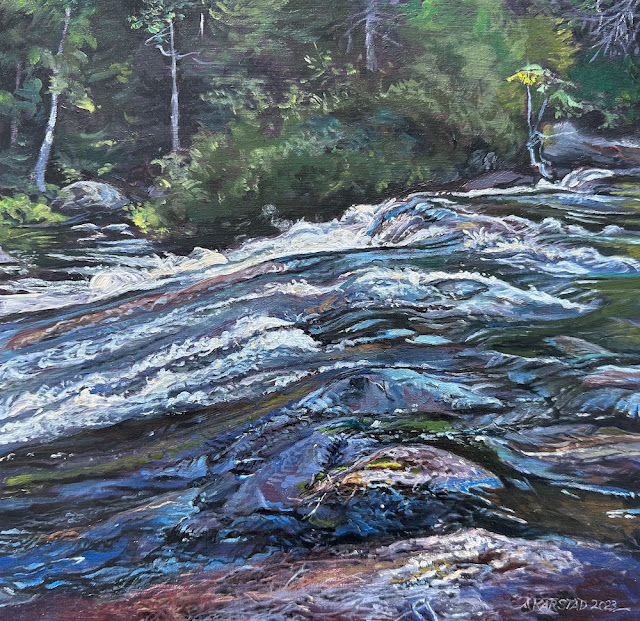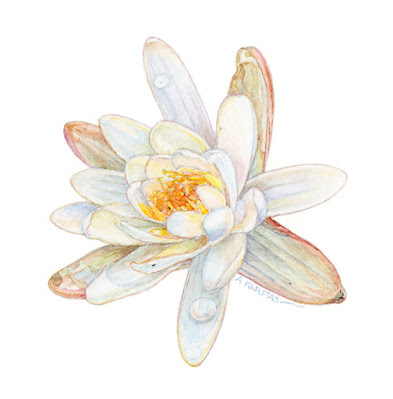Young Cedar in Snow

"Young Cedar in Snow" oil on birch panel 6x6 in. 26 December 2024 found me at our place in Bishops Mills on my 74th birthday, and my goal for the day was to accomplish another in the series of annual "birthday paintings." Last year this time, it was raining on the snow, and I was sheltering in a friend's car to paint a wetland scene with heavy sunset clouds. This year I was happy to be free to trudge out in the snow along the path "out back" at -7C with no precipitation, pulling a sled loaded with my painting gear and blankets, and reminiscing of the years when I boasted to Fred that any temperature above -20C was not cold enough for winter outdoor painting. I have learned over many years of painting "en plein air," that I lose much less body heat when wrapped in a blanket to sit on the snow, than I would, standing at an easel - no matter how many clothes I have on. This is the first time I've used our sturdy high-sided "Pelican...





